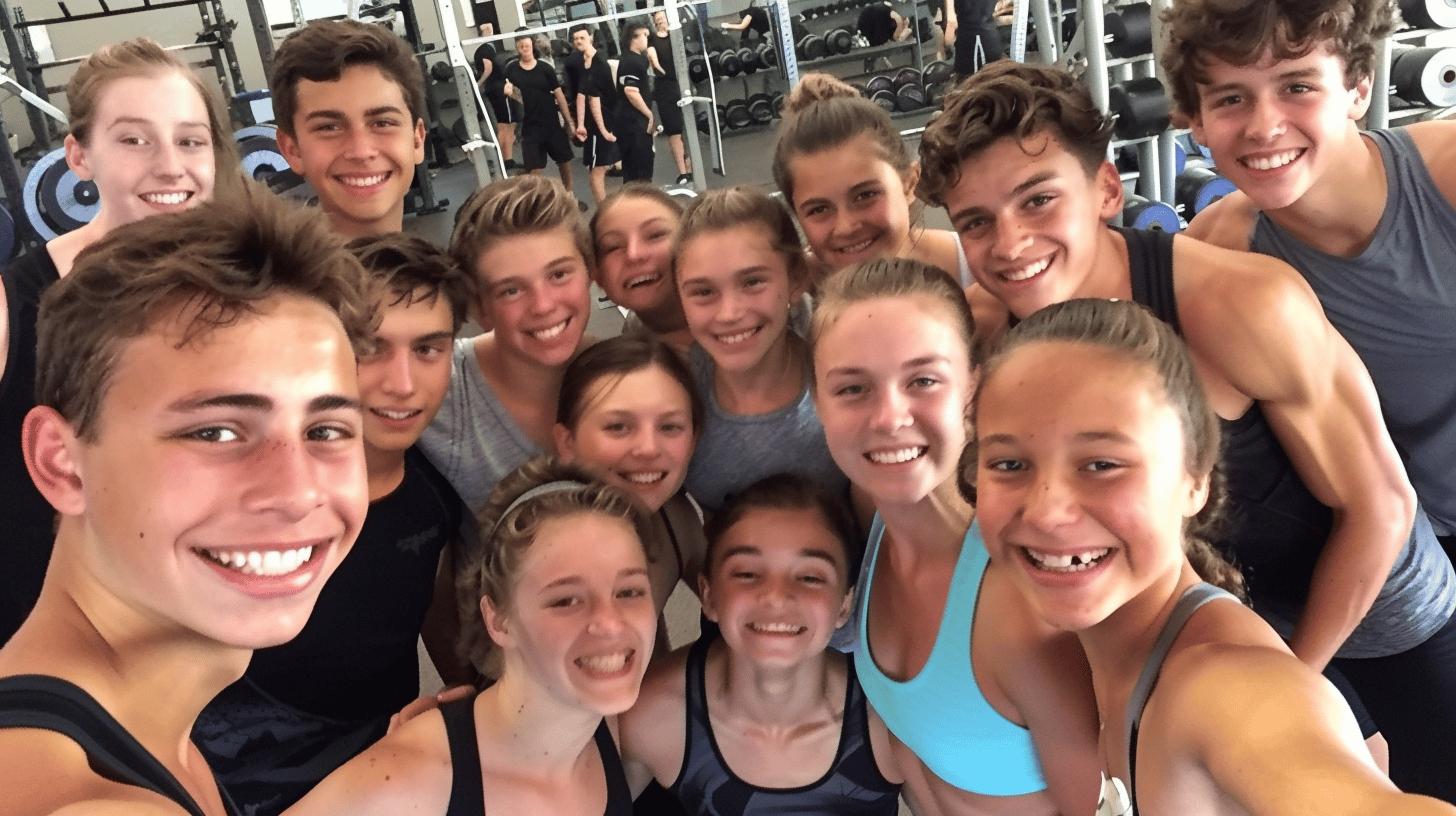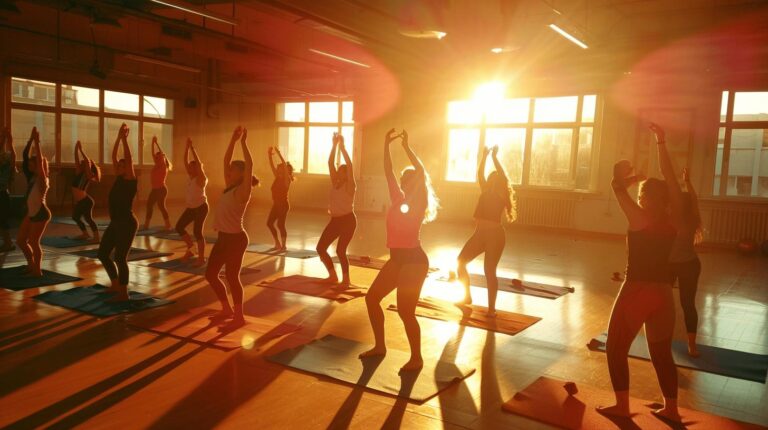Are you struggling to find fun and effective ways to get teenagers excited about fitness? With the increasing prevalence of screen time and sedentary lifestyles, ensuring that teens engage in regular physical activity is more crucial than ever. In this article, we'll explore a variety of fitness classes designed to not only keep teenagers physically active but also support their mental well-being, build their confidence, and provide a constructive outlet for stress. Get ready to discover dynamic fitness options that promote well-rounded development and a healthier lifestyle for your teens.
Benefits of Fitness Classes for Teenagers
Regular physical activity supports both physical and mental health during the developmental years. Fitness classes cater specifically to teenagers, helping them build strength, improve cardiovascular health, and maintain a healthy weight. These classes also promote better posture, coordination, and overall physical fitness.
Exercise plays a crucial role in reducing stress and anxiety in teenagers. Engaging in fitness activities releases endorphins, which are natural mood lifters. Participating in structured fitness classes can also help teenagers manage stress, enhance their focus, and improve sleep patterns.
- Provides a social environment, promoting friendships and peer support
- Encourages teamwork and cooperation
- Offers a sense of belonging and community
- Helps develop communication skills
- Fosters a positive and supportive atmosphere
Overall, fitness classes are instrumental in building confidence and self-esteem in teenagers. They provide a structured environment where teens can set and achieve personal goals, boosting their self-worth. The skills and habits developed in these classes can lead to a lifelong appreciation for physical activity and a healthier lifestyle.
Types of Fitness Classes for Teenagers
Teenagers have a variety of fitness class options that cater to different interests and fitness goals. From strength training to yoga, each class type offers unique benefits to help teens stay active and healthy.
Teen Strength Training
Strength training classes are designed to help teenagers build muscle and improve overall fitness. These classes focus on exercises such as weightlifting, bodyweight exercises, and resistance training. Strength training not only enhances muscle mass but also supports bone density, joint health, and metabolic rate. It's a crucial component of a well-rounded fitness regimen for teenagers aiming to improve their physical strength and endurance.
Teen Yoga Classes
Yoga classes for teenagers focus on flexibility, mindfulness, and stress relief. These sessions include various yoga poses, breathing exercises, and meditation techniques. Yoga helps improve flexibility, balance, and posture while promoting relaxation and mental clarity. It's an excellent way for teenagers to unwind, reduce stress, and develop a deeper connection between mind and body.
Teen HIIT Classes
High-Intensity Interval Training (HIIT) classes are high-energy workouts that combine short bursts of intense exercise with periods of rest or low-intensity activity. HIIT is effective for improving cardiovascular health, burning calories, and boosting metabolism. These classes are ideal for teenagers looking for a challenging and dynamic workout that delivers quick results in terms of fitness and endurance.
Dance Fitness for Teens
Dance fitness classes are fun, engaging, and promote coordination and rhythm. These classes incorporate dance routines set to music, making exercise enjoyable and entertaining. Dance fitness helps improve cardiovascular health, muscle tone, and flexibility. It's a great way for teenagers to stay active while expressing themselves creatively and socially interacting with peers.
| Class Type | Benefits |
|---|---|
| Teen Strength Training | Builds muscle, supports bone density, improves joint health |
| Teen Yoga Classes | Improves flexibility, promotes mindfulness, reduces stress |
| Teen HIIT Classes | Boosts cardiovascular health, burns calories, enhances metabolism |
| Dance Fitness for Teens | Enhances coordination, rhythm, and cardiovascular health |
How to Choose the Right Fitness Class for Teenagers

Selecting the right fitness class for teenagers involves considering several key factors, including age, fitness level, and personal interests. Ensuring that the class aligns with a teen's developmental stage is crucial for safety and effectiveness. Additionally, matching the class to the teen's enthusiasm and motivation can significantly impact their commitment and overall experience.
Age-appropriate workouts are essential to ensure that the exercises are safe and effective for a teenager's growing body. Classes designed for specific age groups take into account the physical and cognitive development stages, minimizing the risk of injury and promoting optimal growth. For beginners, starting with basic classes helps build a solid foundation, introducing them to the fundamentals of fitness in a structured and supportive environment.
- Begin with low-impact classes to prevent injury
- Choose classes that focus on overall fitness rather than specialization
- Look for instructors with experience in youth fitness
- Ensure the class environment is supportive and encouraging
- Attend trial sessions to gauge interest and compatibility
- Prioritize consistency over intensity to build lasting habits
Advanced Fitness Classes for Teens
Advanced fitness classes are suitable for teenagers who have already developed a foundational level of fitness and are looking to challenge themselves further. These classes often require a higher level of physical conditioning and familiarity with more complex exercises. The benefits of advanced classes include improved strength, endurance, and specialized skill development. Teens in these classes can expect a rigorous workout that pushes their limits while emphasizing proper form and technique to prevent injuries.
Scheduling and Locations for Teen Fitness Classes
Local gyms and community centers frequently offer youth fitness classes designed to accommodate teenagers' schedules and fitness levels. These venues provide a variety of classes, from strength training to dance fitness, ensuring that teens have access to diverse workout options. Many community centers also offer discounted rates or free classes to encourage youth participation. Additionally, local gyms may have specific times reserved for teen workouts, creating a safe and welcoming environment for young participants.
After-school programs are another excellent option for teenagers looking to maintain a consistent fitness routine. These programs are structured to fit seamlessly into a teen's daily schedule, providing regular physical activity after school hours. They often include a variety of activities, such as team sports, yoga, and HIIT classes, which help keep teens engaged and motivated. Furthermore, after-school fitness programs promote a healthy lifestyle by providing a structured environment where teens can interact with their peers and develop positive exercise habits.
- Local gym websites
- Community center bulletins
- School newsletters
- Youth sports leagues
- Fitness apps with teen-specific filters
Summer fitness camps offer a focused and intensive approach to physical training over a shorter period. These camps are ideal for teenagers who want to immerse themselves in a fitness-centric environment, often combining fun activities with rigorous workouts. Summer camps provide an excellent opportunity for teens to enhance their fitness levels, learn new skills, and build lasting friendships in a supportive and energetic setting.
Expert Tips for Teenagers in Fitness Classes
Proper form and technique are crucial to avoid injuries. Incorrect movements can lead to strains, sprains, and other injuries that may hinder progress and cause long-term issues. Ensuring that teenagers understand the correct form for each exercise helps build a solid foundation for safe and effective workouts.
Staying hydrated and listening to the body are important aspects of safe workouts for teens. Dehydration can lead to fatigue, dizziness, and decreased performance, making it essential for teenagers to drink water before, during, and after their fitness classes. Additionally, teens should pay attention to their bodies and rest when they feel overly fatigued or experience pain, as pushing through discomfort can result in injuries.
- Light jogging or brisk walking
- Dynamic stretching (e.g., leg swings, arm circles)
- Foam rolling to release muscle tension
- Gentle static stretching post-workout
Instructors emphasize muscle engagement and breathing for effectiveness. Engaging the correct muscle groups ensures that the exercises target the intended areas, leading to better results. Proper breathing techniques, such as exhaling during exertion and inhaling during relaxation phases, help maintain oxygen flow to the muscles, enhancing performance and endurance.
Final Words
Understanding the benefits of fitness classes for teenagers highlights their role in supporting both physical and mental development. Different types of classes, such as strength training, yoga, HIIT, and dance fitness, cater to various interests and fitness levels. Finding the right fit involves considering age, experience, and personal preferences. Convenient scheduling and locations make it easier for teens to participate regularly. Finally, expert tips emphasize form, hydration, and injury prevention.
Incorporating a fitness class for teenagers into their routine promotes holistic well-being, paving the way for a healthier future.
FAQ
Youth fitness classes near me
Parents and teenagers can locate youth fitness classes near their vicinity by searching online directories, fitness apps, or local gym and community center websites. Cities often have multiple options available.
Can a 14 year old workout at a gym?
Yes, a 14-year-old can work out at a gym. Many gyms offer specific teen memberships or fitness programs designed for young individuals to ensure a safe and effective workout environment.
What are the fitness ideas for a 13-year-old?
Fitness ideas for a 13-year-old include strength training, yoga, high-intensity interval training (HIIT), and dance fitness classes. Participation in various sports and outdoor activities also promotes overall fitness and well-being.
Can under 16s go to the gym?
Yes, individuals under 16 can go to the gym, though it often depends on the facility's policy. Many gyms offer programs or classes specifically tailored for younger age groups.
Should a 15-year-old go to the gym?
A 15-year-old can benefit from gym workouts, provided they follow age-appropriate routines and focus on proper form and technique to prevent injuries. Many gyms have dedicated teen fitness classes or mentorship programs.

